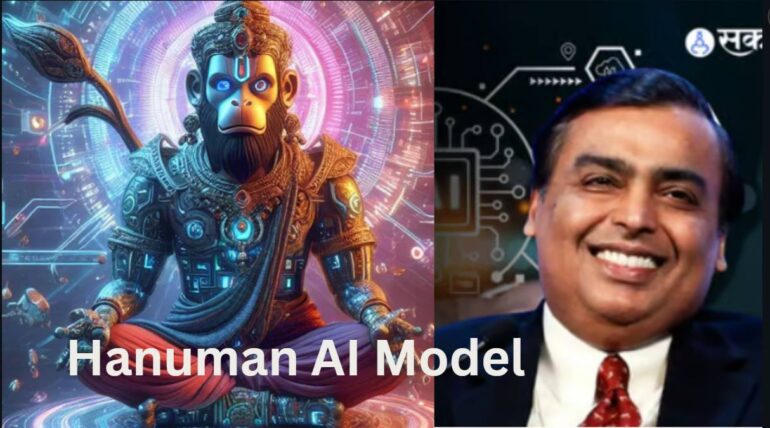TL;DR:
- Seetha Mahalaxmi Healthcare (SML) and BharatGPT, led by IIT Bombay, introduce ‘Hanooman,’ a suite of Indic large language models for 22 Indian languages.
- Hanooman comprises models ranging from 1.5 billion to 40 billion parameters, with the first four models set for open-source release next month.
- These models support 11 Indian languages initially, with plans to expand to cover all 22 languages.
- Hanooman offers diverse AI capabilities, including text-to-text, text-to-speech, and text-to-video generation.
- SML aims to offer model-as-a-service and develop specialized models like VizzhyGPT tailored for healthcare applications.
- Challenges include sourcing high-quality datasets in Indian languages, currently relying on synthetic datasets.
- The announcement was made at the Nasscom Technology and Leadership Forum in Mumbai, highlighting collaboration among IITs, SML, and Reliance Jio.
Main AI News:
Seetha Mahalaxmi Healthcare (SML), in partnership with BharatGPT spearheaded by IIT Bombay, unveils ‘Hanooman,’ a suite of Indic large language models proficient in 22 Indian languages. Vishnu Vardhan, the visionary behind SML, discloses the development of an enterprise-grade lineage of foundational language models scaling up to 40 billion parameters.
The initial quartet of models, ranging from 1.5 billion to 40 billion parameters, is slated for release next month, embracing an open-source ethos. Presently, these models exhibit proficiency across 11 Indian languages, encompassing Hindi, Tamil, Telugu, Malayalam, and Marathi, with ambitious plans for broader linguistic inclusivity.
Hanooman boasts multifaceted AI capabilities, facilitating seamless generation across text-to-text, text-to-speech, text-to-video, and vice versa domains. SML is actively engaging BFSI entities, healthcare institutions, and mobile app developers to furnish model-as-a-service provisions or craft bespoke models through the fine-tuning of the Hanooman series. Foremost among these tailored iterations is VizzhyGPT, a healthcare-centric model honed on expansive datasets encompassing multiomics, clinical research, and EMR archives.
Vardhan underscores the pivotal challenge of acquiring high-quality datasets in Indian languages for LLM development. Enhancing dataset quality, whether textual, auditory, or visual, stands as the primary hurdle, given the prevalent reliance on synthetic datasets derived from translations, amplifying the risk of inaccuracies or fabrications.
The revelation unfolded at the Nasscom Technology and Leadership Forum in Mumbai. Spearheaded by IIT Bombay, the BharatGPT consortium, backed by seven additional IITs and supported by the Department of Science and Technology, SML, and Reliance Jio, signifies a collaborative research endeavor. Professor Ganesh Ramakrishnan of IIT-B notes the collaborative efforts with Reliance Jio, emphasizing bespoke ML models tailored for industry-specific applications in telecom and retail sectors, emphasizing the demand for nuanced, tailored solutions.
Conclusion:
The launch of ‘Hanooman’ marks a significant advancement in Indic language processing, with implications for various sectors, including healthcare, BFSI, and mobile applications. With the promise of open-sourcing initial models and plans for linguistic inclusivity, this initiative fosters innovation and accessibility in AI technologies tailored for Indian languages. However, addressing challenges in dataset quality remains crucial for ensuring accuracy and reliability, underscoring the need for collaborative efforts across industries and academia.

